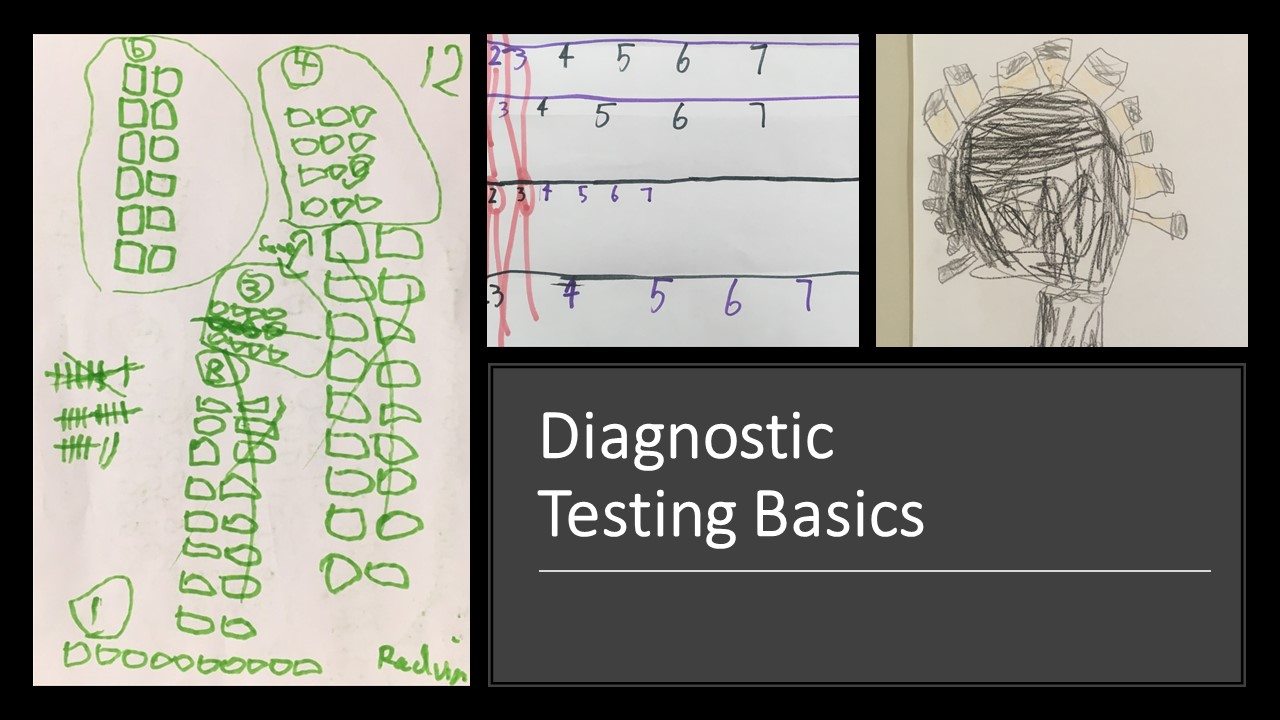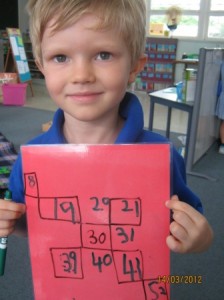
Formative assessment, developmental stages and starting the year well
The goal of formative assessment should always be to find out what each student NEEDS next, rather than focusing
In classrooms around the country gifted mathematics students are hiding in support maths. They have been overlooked by our current Fluency assessment – left back, seeming to struggle and falling behind.
Here are some simple questions that I use as a very quick diagnostic tool for students working in different grades:
 o represent parts of a hundreds chart. Write one number (e.g. 16) at the top of the shape, and see if the students can work out what the other numbers are. The serious extension question is to start with a 30 in the middle and then include four squares on the corners. See the picture on the left of Rohan, a Prep student, in March of this year.
o represent parts of a hundreds chart. Write one number (e.g. 16) at the top of the shape, and see if the students can work out what the other numbers are. The serious extension question is to start with a 30 in the middle and then include four squares on the corners. See the picture on the left of Rohan, a Prep student, in March of this year.Download tasks with full instructions here
Have fun finding out what your students really understand and really don’t understand. I firmly believe that it is not until we know about students’ intuitive understanding of mathematics and their connections between numbers that we can truly teach the student rather than the content.
Read about how to fix misconceptions in maths here

The goal of formative assessment should always be to find out what each student NEEDS next, rather than focusing
Recently I’ve been pondering findings from a major report into Australian schooling that kids who are struggling in maths by
Developing algorithms is an important area in AC9, and one that is new to many teachers.But what does it mean
Organising your classroom can be tricky, especially when behaviour is an issue. Here are two layouts that I find work,

Extension can be a tricky issue to deal with. While we can try to have extension questions for most in-class
Setting the scene for risk-taking One of the most difficult problems to overcome when establishing a problem-based classroom is encouraging

KENNEDY PRESS PTY LTD
FOR ALL ENQUIRIES, ORDERS AND TO ARRANGE PD:
© COPYRIGHT 2024 KENNEDY PRESS PTY LTD ALL RIGHTS RESERVED TERMS & CONDITIONS